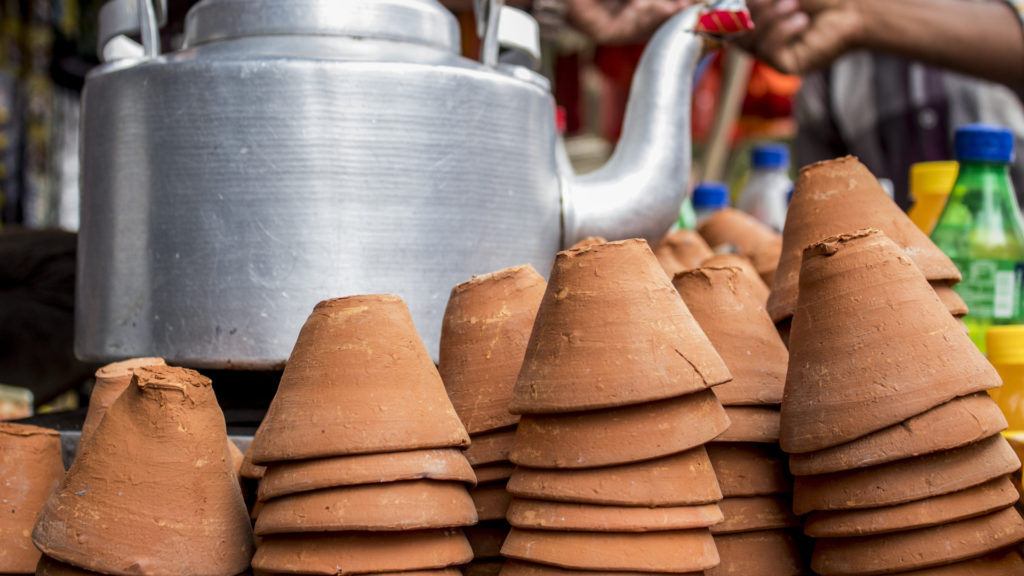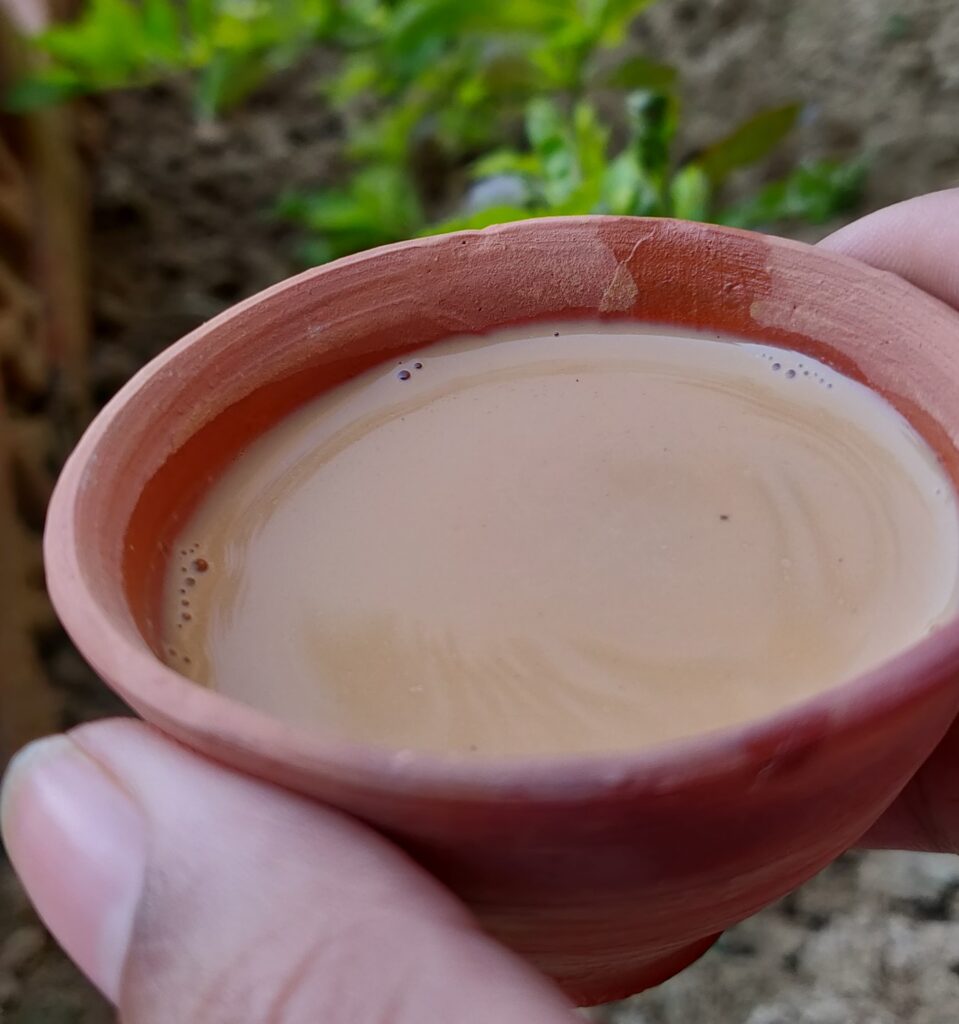Pottery has always been the star of Indian cultural art. Since the days of Indus valley civilisation, the art of pottery has showered its charisma. Till today the pottery supports millions of artisans. The art of Kulhad making is one of the pearls of pottery. You may remember Kulhad from the famous Indian beverage- ‘Kulhad chai’ (dainty tea served in the beautifully carved Kulhad).

Kulhad is an earthen pot generally used for drinking beverages. As compared to the other earthen vessels it is smaller and more intricate. Along with being a wondrous piece of art, it is a useful product.
The Changing Importance of Kulhad
Kulhad holds a special place in the hearts of Indians. Before the introduction of factory manufactured products, Kulhad ruled among the beverage vessels. In ancient India, Kulhad was an essential utensil that was used for numerous purposes ranging from mixing herbs to serving liquids. It was before the wide usage of plastic when Kulhad was used in every household including the luxurious palaces.
Introduction of Plastic
Those were the golden period for the artisans when the effort and time they invested in carving the Kulhads felt to be worthy. But everything was changed by the entry of automated factories in India. The plastic vessels were produced at a higher rate than Kulhad. The machine-made goods spurred to defeat the intricate work of artisans. People were inclined to the easily accessible and cheaper means and thus they shifted to plastic vessels.
Kulhad may appear delicate and fragile but it has stood the test of time. The artisans have succeeded in saving the prestigious Kulhad making art against great odds. Most people still love the sweet smell of Kulhad given the opportunity to use it.
The secret behind its charm is the mystical flavour it adds to the beverages served in it. Though the importance of Kulhad declined with the changing world, it still exists. In today’s machinery driven society, Kulhad helps thousands of artisans to earn their livelihood. These artisans dedicate their whole life for learning the skill and making it. The traditional Kulhads are made using bare hands and it demands both the sweat and dedication.
The Struggle and Pleasure of Kulhad Making
For producing Kulhads, the artisans use black (Kewal) clay obtained from streambeds and desilting tanks. The rolled-up clay is placed on the traditional tool for pottery making, the Chaak. Then the artisan elegantly rotates the round plate to give shape to the delicate vessel. For strengthening the Kulhad, the homemade kiln of charcoal and cow dung fire is used to roast the vessel. After 2 days the beautiful and useful Kulhad is ready.

With technological development, automatic Chaaks are also introduced to the pottery makers but the conservative artisans with limited means still use the manual one. The art of Kulhad making is extremely close to the heart of the pottery makers but with the interference of plastic vessels, the yield is not promising. It’s a fascinating experience for the visitors to witness the making of Kulhad. But when you put yourself in the shoes of the artisans you feel their sufferings. The compulsion for use of Kulhads in Indian railways was a relieve for all these talented Kulhad designers. This decision of Indian railways helped to preserve the earthly fragrance in Indian art and culture.
Beverages Served in Kulhad
Kulhads are not only important for the producers but also the consumers. The Sondhi (earthly) smell of Kulhads steals everyone’s hearts. It is said that hot beverages are best served in Kulhads. It won’t be wrong to say that Kulhad tea is the most famous and pleasing beverage in North India. Along with warm tea, cold lassi is also served in the Kulhads. When something is poured in Kulhad the earthly flavour blends with liquid and makes it even more delicious. Kulhad beverages taste different, they taste more cheerful. Kulhad beverages smell different, they smell more delightful.
The Creative Use of Kulhad- Kulhad Painting
The creative minds of people can discover numerous beautiful uses of a single product. The same happened with Kulhad when it was used as a decorative item. Within no time the art of Kulhad painting spread all over India. The magnificent appeal of Kulhad lured artists to paint it with vibrant hues and decorate it in their homes.
Kulhad painting was a turning point for the artisans as well. The people who were inclined towards the plastic vessels were now more interested in the decorated earthen pots. All kinds of the cultural painting are practised over the adorable Kulhads and it has turned into a beneficial industry. The Kulhad with beautiful figures painted on it supports the artisans better and attracts the consumers more.
Conclusion
The unknown who invented Kulhad gifted the Indian culture a golden bird. Kulhad has uncountable benefits and it’s a true people pleaser. The usage of Kulhad is eco-friendly that protects the environment as well as the rich Indian culture. Since Kulhad is a use-and-throw utensil there is no issue of hygiene. And the beverages served in Kulhad definitely tastes better. Even if you drink water from Kulhad the sip enriched with the peaceful smell of earth will satisfy your soul. Kulhad is the traditional cup that can also elevate the beauty of your home.

Good work! got lot of information about Indian kulhad